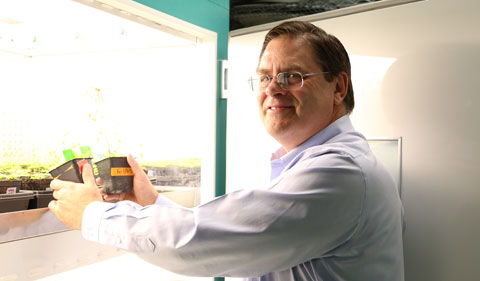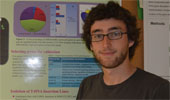Dr. Allan Showalter, Professor of Environmental & Plant Biology, will give an invited talk during the Second International Conference on Physiological, Biochemical and Molecular Arguments for Salt Tolerance at Qatar University, Doha, Qatar, Oct. 12-14
Showalter’s presentation on “Cellular Signaling of Root Growth in Response to Salt” includes research contributions by graduate students Debarati Basu ’15Ph.D. and Lu Tian (currently pursuing an M.S. degree) and undergraduate students Tayler Debrosse, Emily Poirier, Kirk Emch, Hayley Herock, and Andrew Travers.
Abstract: Fundamental processes that underpin plant growth and development depend crucially on the action and assembly of the cell wall, a dynamic structure that changes in response to both developmental and environmental cues. While much is known about cell wall structure and biosynthesis, much less is known about the functions of the individual wall components, particularly with respect to their potential roles in cellular signaling. Loss-of-function mutants of two arabinogalactan-protein (AGP)-specific galactosyltransferases namely, GALT2 and GALT5, confer pleiotropic growth and development phenotypes indicating the important contributions of carbohydrate moieties towards AGP function. Notably, galt2galt5 double mutants displayed impaired root growth and root tip swelling in response to salt, likely as a result of decreased cellulose synthesis. These mutants phenocopy a salt-overly sensitive mutant called sos5, which lacks a fasciclin-like AGP (SOS5/FLA4) as well as a fei1fei2 double mutant, which lacks two cell wall-associated leucine-rich repeat receptor-like kinases. Quintuple galt2galt5sos5fei1fei2 mutants were produced and provided evidence that these genes act in a single, linear genetic pathway involved with root growth in response to salt. Further genetic and biochemical analysis of the quintuple mutant demonstrated involvement of these genes with the interplay between cellulose biosynthesis and two plant growth regulators, ethylene and ABA, in modulating cell wall integrity.




















Comments